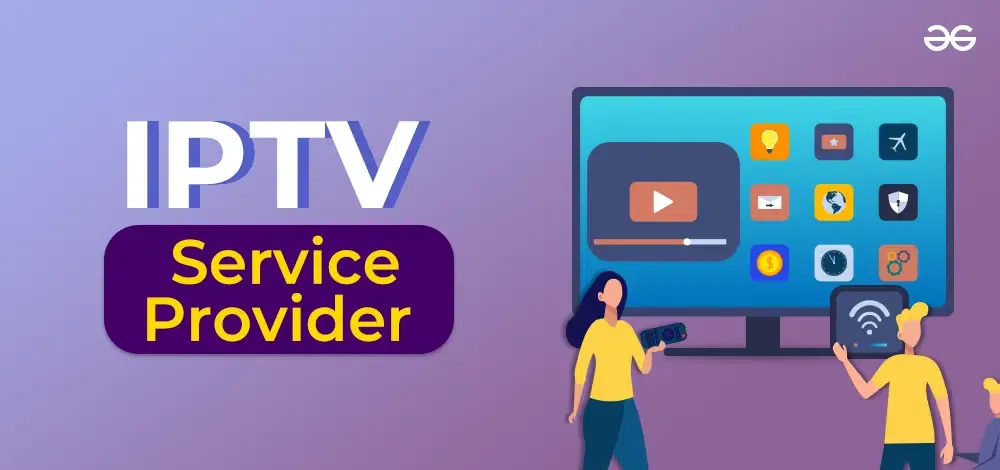Sign Up With the Streaming Change: IPTV Subscription for Limitless Amusement
How IPTV Functions: A Step-by-Step Overview to Internet Method Tv Modern Technology
Web Procedure Tv (IPTV) has actually transformed the means we eat tv web content, providing a brand-new realm of possibilities with the power of the net. Understanding the complexities of just how IPTV functions can clarify the modern technology that drives this innovative kind of media shipment. From the basic principles of IPTV to the complicated procedure of content shipment, each step plays a vital role in making sure a seamless viewing experience. In this overview, we will uncover the hidden systems that make IPTV a remarkable fusion of modern technology and entertainment.
IPTV Fundamentals
In recognizing IPTV basics, it is critical to understand the fundamental functions of this innovation in supplying tv web content online. IPTV, which stands for Internet Procedure Tv, utilizes Net Procedure (IP) networks to send television material to individuals' devices. Unlike typical techniques of transmitting tv content through cable television or satellite signals, IPTV streams media with high-speed web links.

In addition, IPTV enables for interactive abilities, such as video as needed (VOD) and electronic program guides (EPG), improving the customer experience by offering even more control and adaptability in accessing content. Overall, understanding the fundamentals of IPTV establishes the structure for exploring its advanced capabilities and the advantages it offers to modern-day tv intake.
Web Content Shipment Process
Effective content distribution in IPTV systems entails a well-structured process that ensures smooth transmission of television material over IP networks. The web content shipment process in IPTV starts with the creation of the video content, which is then inscribed right into electronic style suitable for IP transmission. This encoded web content is then securely kept on web servers referred to as media web servers. When an audience requests specific web content, the IPTV system gets the requested data from the media web servers and delivers it to the customer's tool over the net.

Middleware Capability
With the assimilation of middleware, IPTV systems gain boosted capability that enhances individual interaction and content management. Middleware acts as a crucial part that connects the space between the interface and the back-end facilities, assisting in seamless communication and communication within the IPTV try this out system. One of the essential functions of middleware in IPTV is to make it possible for tailored individual experiences by offering features such as interactive program overviews, video-on-demand solutions, interactive marketing, and individual preferences monitoring. By streamlining these capabilities via middleware, click for source solution providers can supply an extra vibrant and customized IPTV experience to their customers.

Gadget Compatibility
Provided the essential duty of middleware in making it possible for smooth communication and web content monitoring in IPTV systems, an essential aspect to think about is the compatibility of devices used for accessing the IPTV services. Device compatibility is essential for making certain a smooth individual experience and optimal efficiency when accessing IPTV content.
In the context of IPTV, tool compatibility refers to the ability of a tool to effectively interact with the IPTV solution, display material appropriately, and sustain the required protocols and codecs for streaming video web content over the net. Various gadgets, such as smart Televisions, set-top boxes, smart devices, tablets, and computers, might have differing levels of compatibility with IPTV solutions.
To make sure a seamless viewing experience, it is very important for individuals to select devices that work with the particular IPTV service they are making use of. Furthermore, IPTV solution suppliers ought to supply assistance for a variety of gadgets to accommodate the varied needs of their customer base. By prioritizing tool compatibility, both individuals and company can enhance the total IPTV experience.
High Quality of Solution (QoS)
Taking into consideration the vital role of preserving a high standard of performance and integrity in IPTV systems, making sure consistent High quality of Solution (QoS) remains a basic aspect of the individual experience. QoS in IPTV refers to the capability of the system to supply content with very little disruptions, high resolution, and quick filling times. To achieve ideal QoS, various elements require to be addressed. Network data transfer is crucial to support high-quality video streaming without buffering or pixelation. In addition, latency, jitter, and package loss should be decreased to enhance the checking out experience.
Company utilize QoS look at here now systems such as web traffic prioritization, buffering, and error modification to keep a steady IPTV solution. By focusing on IPTV traffic over less time-sensitive data, companies can ensure smooth playback also during height usage hours. Buffering assists make up for network fluctuations, while mistake improvement strategies improve information integrity.
Continuous tracking and optimization of QoS criteria are essential to adjust to altering network conditions and customer needs. Ultimately, a durable QoS framework is vital for providing a seamless and satisfying IPTV experience to users.
Conclusion
In verdict, IPTV operates through the transmission of television content over internet protocol networks. Quality of Service plays a crucial role in keeping the efficiency and dependability of IPTV services - IPTV subscription.